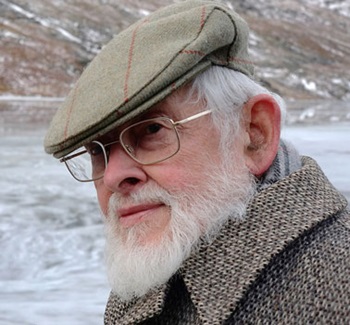About the University of Leicester
John Ellis Jones
 The University is saddened to learn of the death on 28 January 2023 of Mr John Ellis Jones. Having graduated at University College of North Wales, Bangor (now Bangor University) in 1950 with a First in Latin, and in 1951 with a First in Greek, he trained as a schoolteacher and fulfilled National Service obligations before becoming Lecturer in the Department of Classics at the newly chartered University of Leicester in 1957, living in Gilbert Murray Hall. The following year he was appointed to a permanent post at Bangor, where he spent the rest of his career and rose to be Senior Lecturer.
The University is saddened to learn of the death on 28 January 2023 of Mr John Ellis Jones. Having graduated at University College of North Wales, Bangor (now Bangor University) in 1950 with a First in Latin, and in 1951 with a First in Greek, he trained as a schoolteacher and fulfilled National Service obligations before becoming Lecturer in the Department of Classics at the newly chartered University of Leicester in 1957, living in Gilbert Murray Hall. The following year he was appointed to a permanent post at Bangor, where he spent the rest of his career and rose to be Senior Lecturer.
Soon after graduation, John had joined the British School at Athens and begun exploring Greece with his future collaborator Hugh Sackett and others. In due course, he became a distinguished historian and archaeologist, and was elected FSA (Fellow of the Society of Antiquaries of London). From the late 1950s onwards, he became widely known for his co-directorship of important excavations of rural houses (notably the Dema House and the Vari House) and of silver-processing installations in the countryside around Athens (especially at Agrileza). It is believed that he was the first excavator to involve a metallurgist in a Greek excavation from the beginning of the project. He published prolifically by the standards of Classics in the UK at the time, and the results radically changed our understanding of the ancient Greek countryside and the Athenian economy. There were also projects in Crete and the Peloponnese; his last publication, of survey data from Eleia (NW Peloponnese), appeared in 2016, 59 years after his first paper on ancient Greece. His earlier publications included The Greeks (1971) and Ancient Greece (1983), both of which succeed in making archaeology accessible to a wider readership.
 John was a skilled artist, and embellished his publications—several authored with John Graham and Hugh Sackett, but with John named first—with reconstruction drawings of ancient houses and other structures, often depicted in a realistic rural landscape. Perhaps their most famous report was a paper of nearly 100 pages (soon reprinted in book form). It details the epoch-making discoveries at Vari in south-western Attica, a Classical courtyard farmhouse with multiple rooms and an outer enclosure. Pottery and pioneering chromatographic analyses proved that beekeeping had been practised on a substantial scale.
John was a skilled artist, and embellished his publications—several authored with John Graham and Hugh Sackett, but with John named first—with reconstruction drawings of ancient houses and other structures, often depicted in a realistic rural landscape. Perhaps their most famous report was a paper of nearly 100 pages (soon reprinted in book form). It details the epoch-making discoveries at Vari in south-western Attica, a Classical courtyard farmhouse with multiple rooms and an outer enclosure. Pottery and pioneering chromatographic analyses proved that beekeeping had been practised on a substantial scale.
John ran the Bangor branch of the Classical Association for half a century and was for many years curator of the local museum. He was an inspiring lecturer, though he often found the one-hour format constraining, and promoted annual productions of Greek and Roman dramas. Outside the university, he was active in local societies and wrote many contributions to local history and archaeology, the majority in his native language, Welsh, the last appearing in 2022. An excellent sportsman in early life, he represented Bangor University at rugby until he was 40 and Wales in fencing in the over-45 category, continuing to fence in competition until his 80s.
In 1958, John married Renée Radau-Eckstein from Luxembourg, whom he had met in Croatia during his first journey to Greece in 1952. She participated in his archaeological expeditions and they were married for 58 years. They are survived by their two daughters (one of whom did a PhD in Geology at the University of Leicester), a son, and one grandson.
Graham Shipley, School of Archaeology and Ancient History
There will be a public service at Capel Seion, Llanrwst, Denbighshire, on Monday 20 February at 2.00pm, and tea at The Eagles Hotel from 3.00pm. Please notify the undertaker if you plan to attend the tea. Flowers from the family only, but donations to Age Cymru can be arranged with the undertaker, G. L. Jones, Llanrwst (01492 640600).